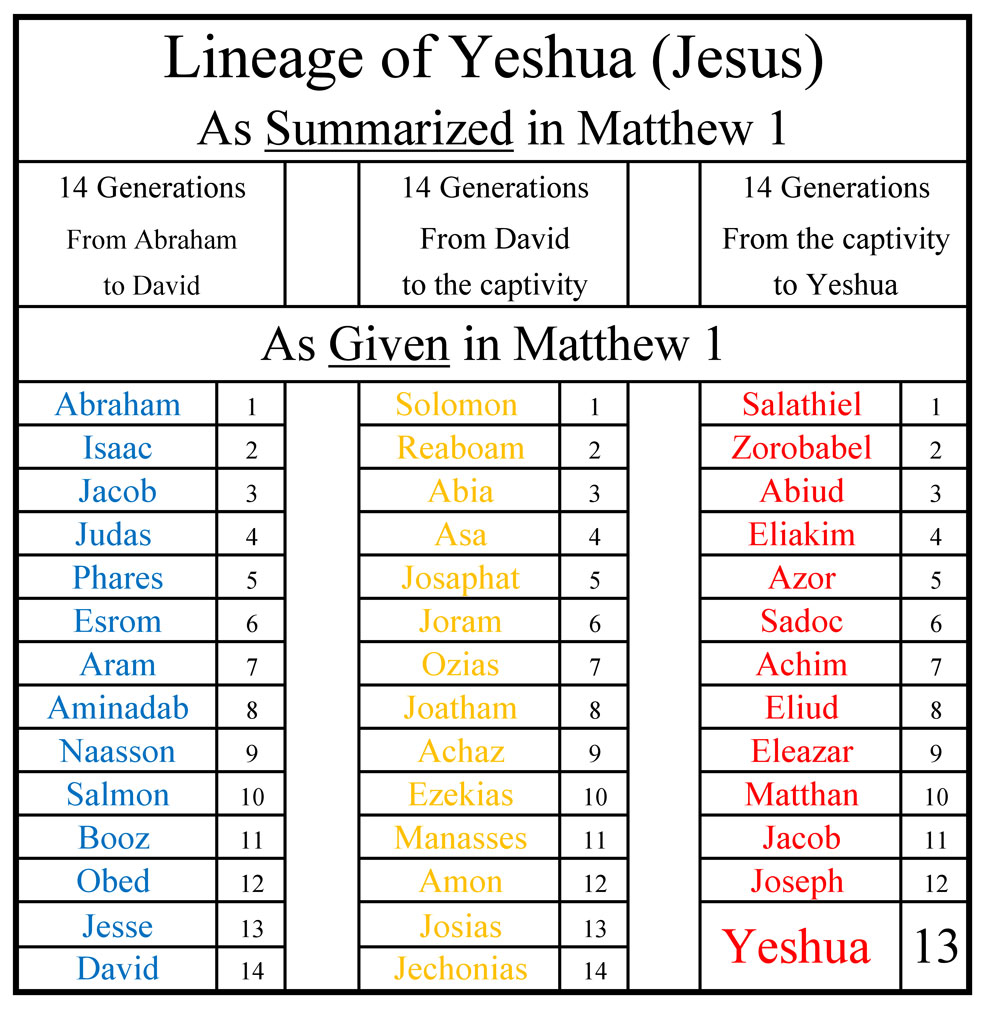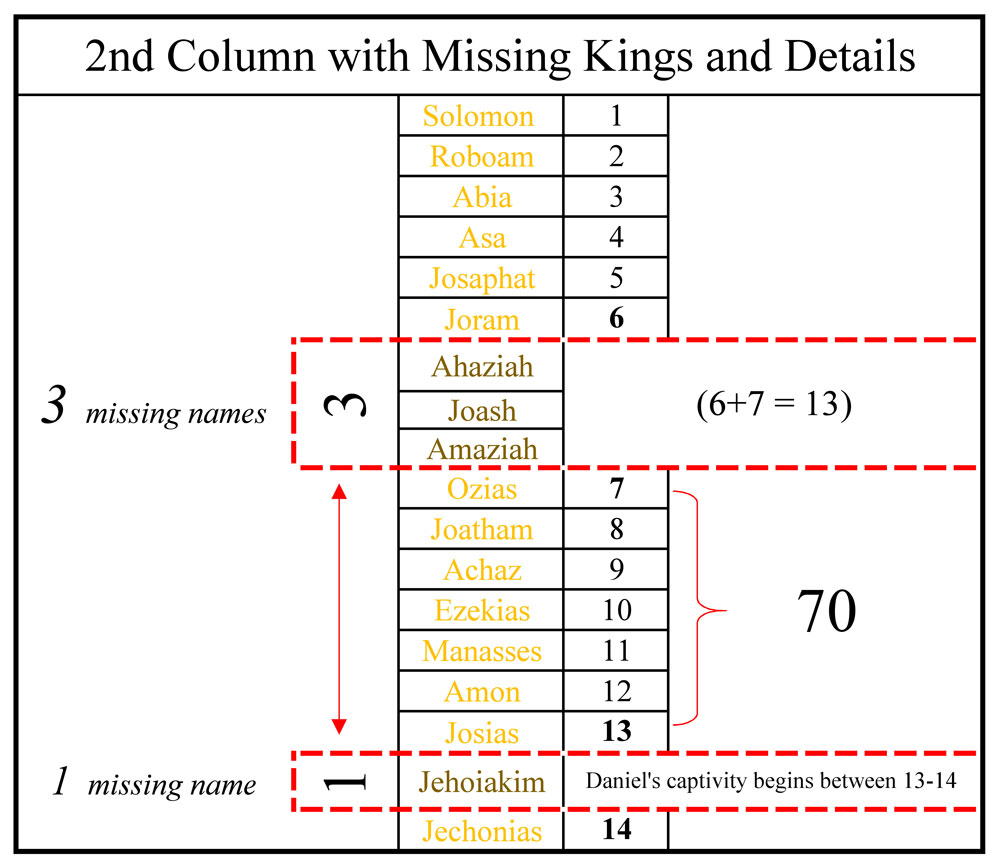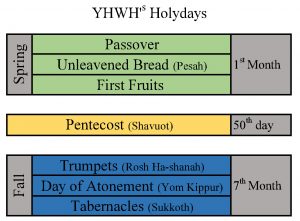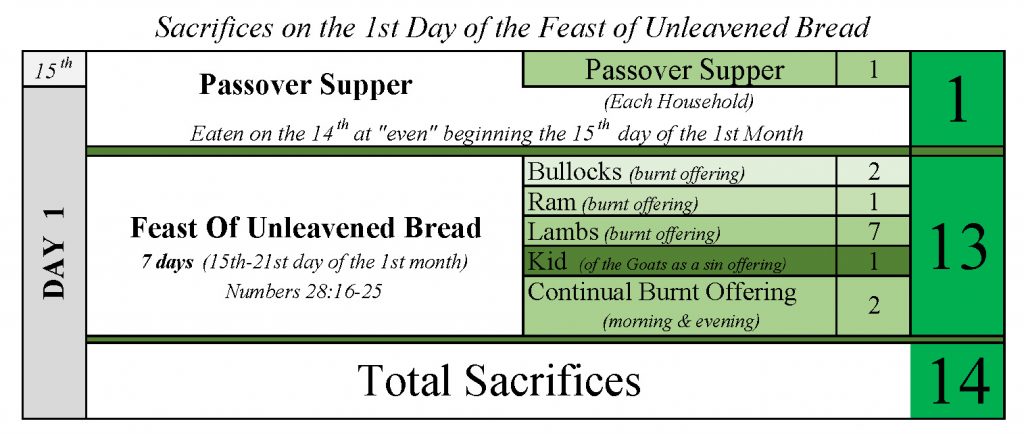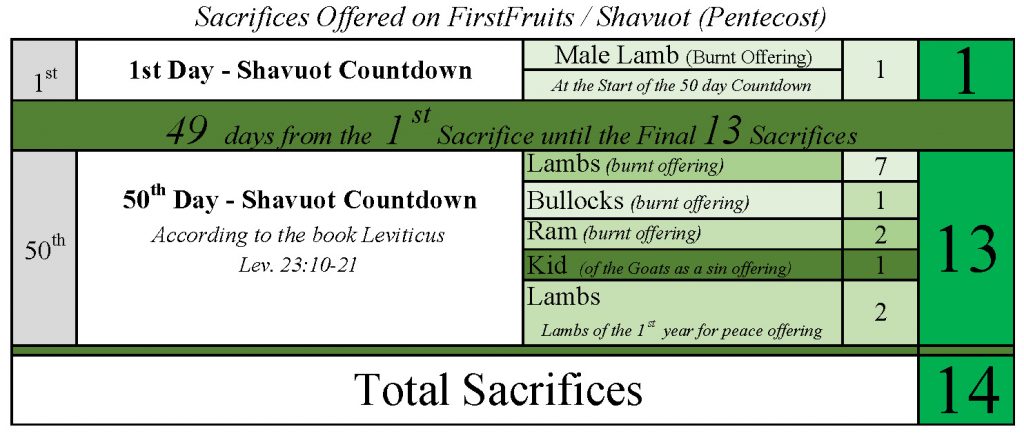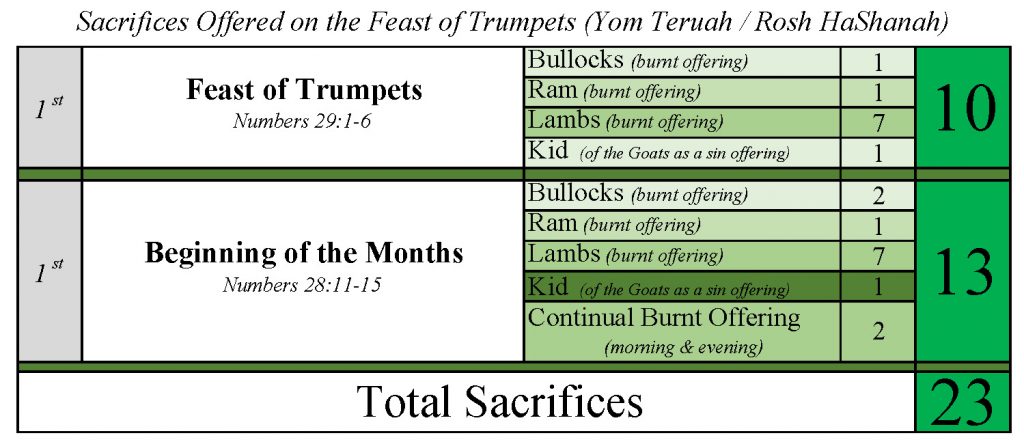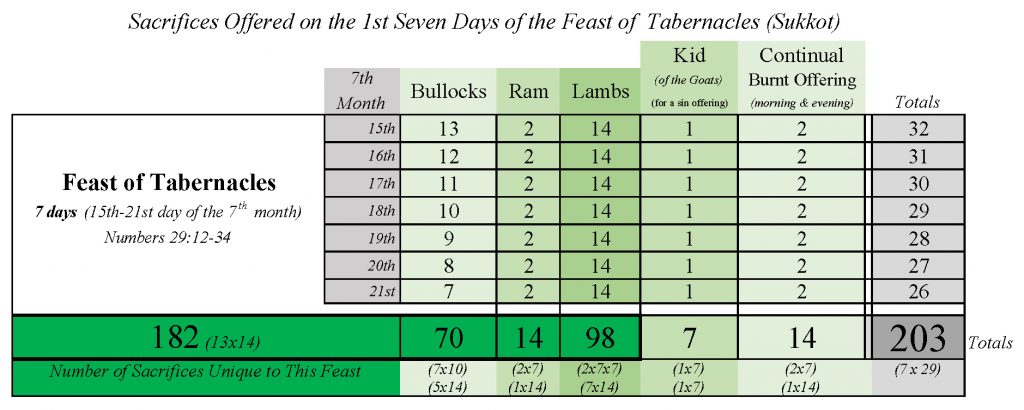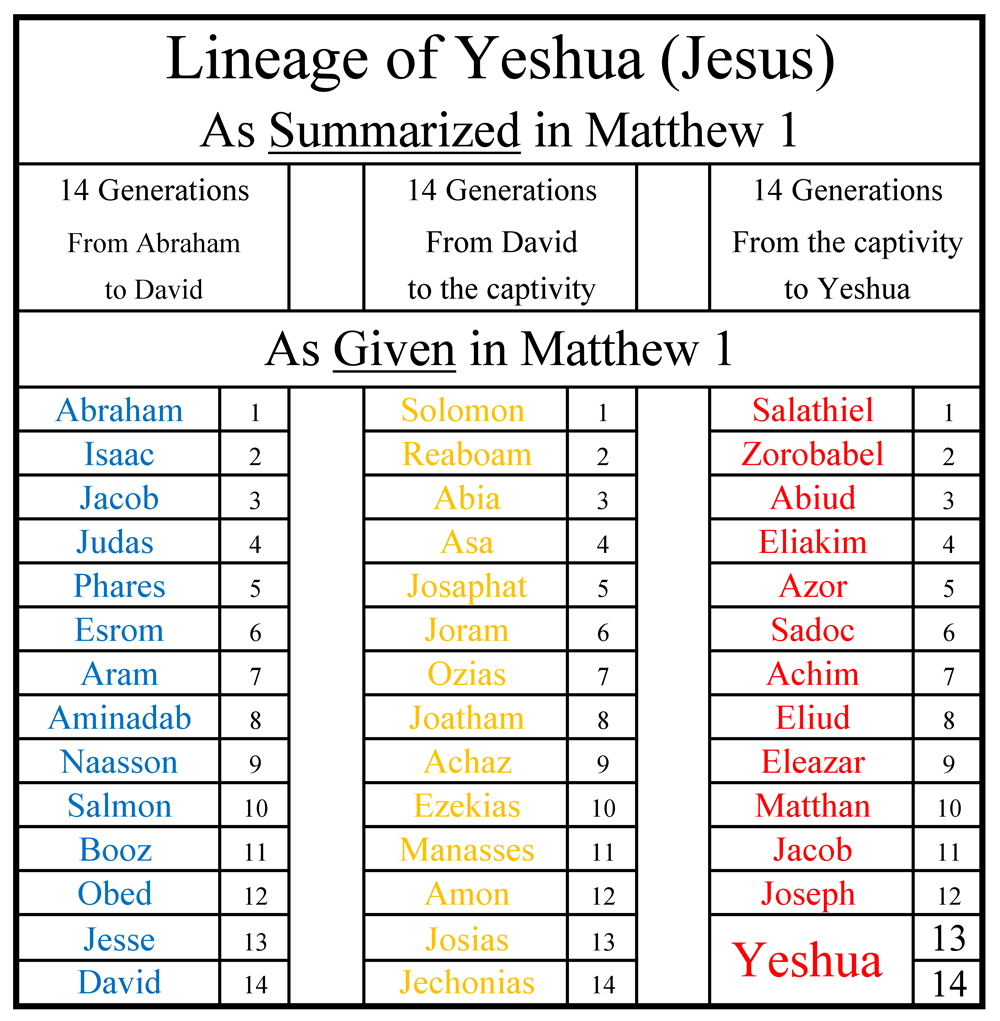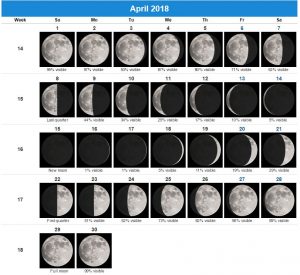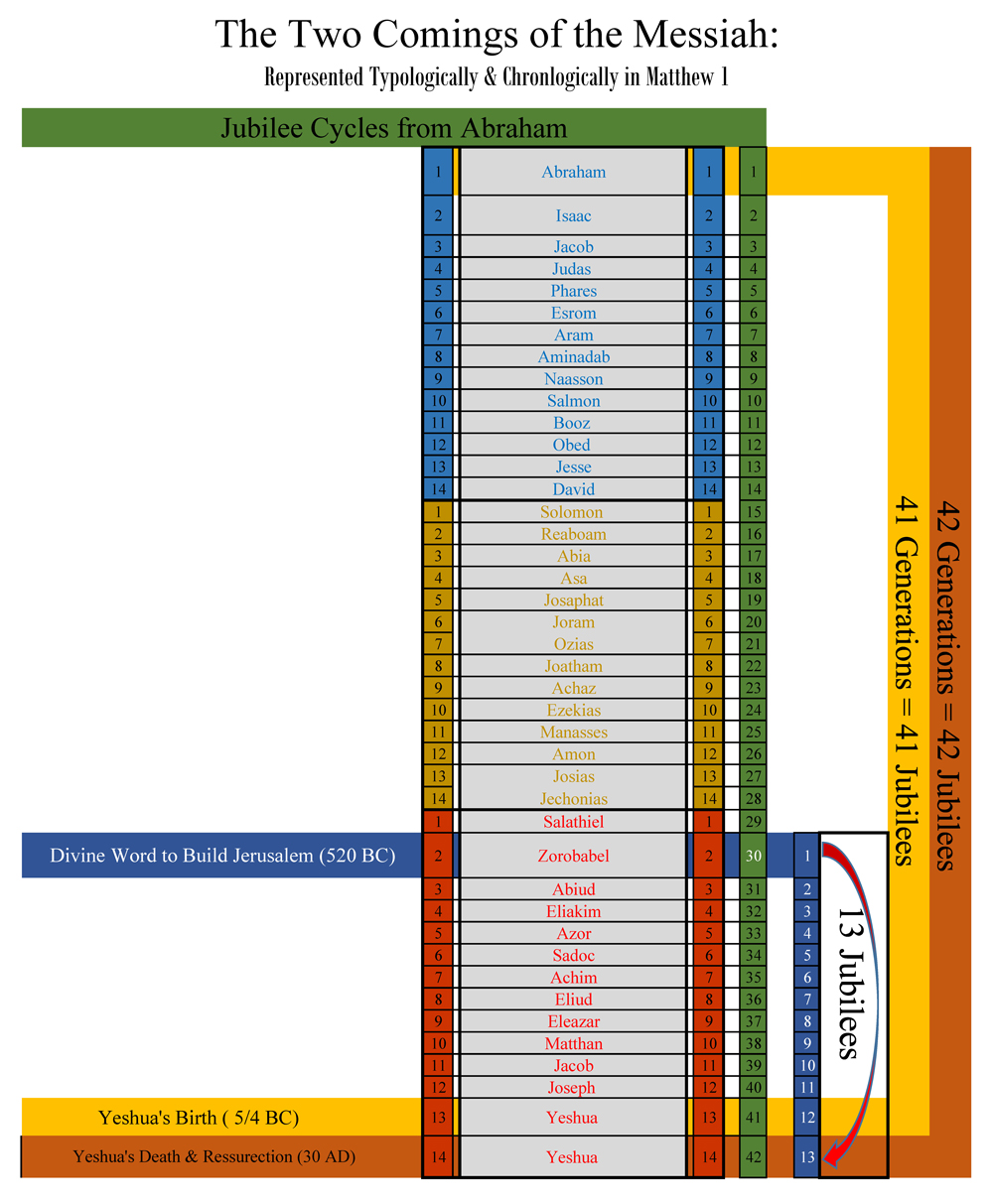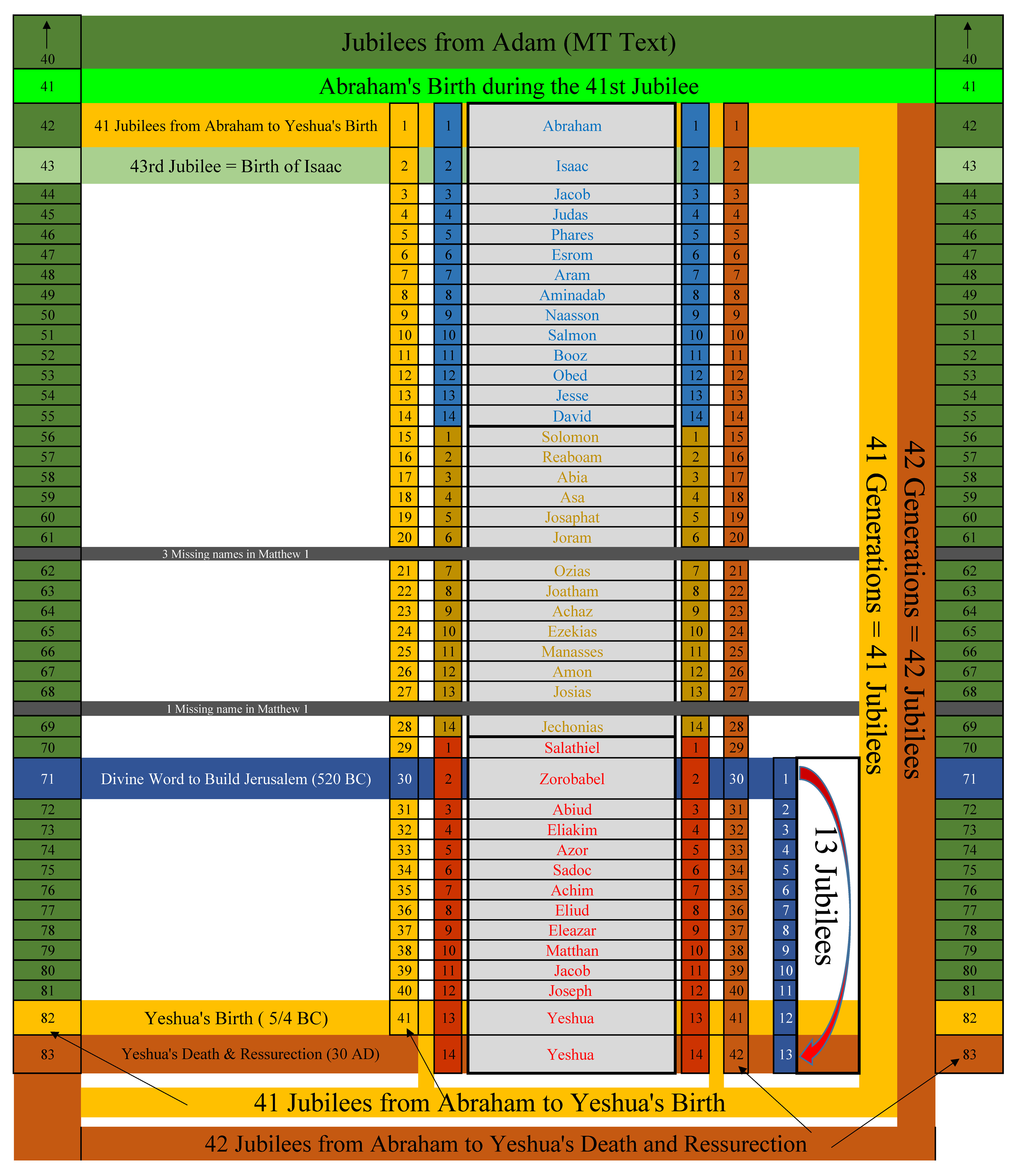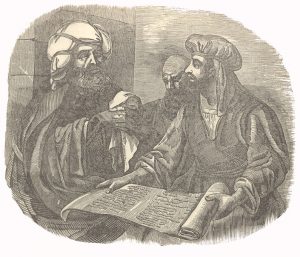 Authors Note:
Authors Note:
This article is Part II in my exploration of Rabbinic forgery hypothesis. The following links will take you to the previous articles in this series.
Part I: The Septuagint, the Masoretic Text, & Matthew 1
Part II: Matthew 1, the Masoretic Text, & the Bible’s Messianic Symbolism
Part III: The Masoretic Text, Matthew 1, & the Jubilee
Part IV: Sir Isaac Newton, Daniel 9, & the Rabbinic Forgeries Hypothesis
Matthew 1 and the Bible’s Messianic Symbolism
Now that you better understand some of the background of the Rabbinic forgery’s hypothesis from my last blog post (here), I now want to lay the ground work for why I believe Matthew 1 and its unique synchronization with the MT text chronology and the jubilee cycles disproves the Rabbinic forgery’s hypothesis as it currently stands.
For anyone who has carefully considered the lineage of Yeshua in Matthew 1, it is an enigma. It’s the opening evidence in the New Testament’s case for Yeshua as the promised Messiah, but instead of a true lineage of the Messiah Yeshua, you have a list of names written more like a coded map of messianic symbolism. Throw in an intentional synchronization with the Daniel 9 prophecy- the Bible’s greatest messianic prophecy and the jubilee cycles and you have a symbolic literary device that stands unparalleled in recorded history.
Do you think I overstate my case? Let’s take a look and I’ll let you decide.
Most scholars acknowledge that the gospel of Matthew was written to a Jewish audience with metaphor, symbolism, and type a Jewish reader steeped in the Torah, Psalms, and Prophets would understand. Matthew sets out to make his case (to his Jewish readers) for Yeshua of Nazareth as the prophesied Messiah in what appears to be at first glance merely a generational listing of Yeshua’s ancestors. It’s not until verse 17 that the reader gets an idea that there is more to this lineage than just a list of names.
After providing a list of Yeshua’s ancestors, Matthew summarizes Yeshua’s lineage by arranging it into three 14 generational groupings. This raises Yeshua lineage above a mere list of names to a chronological statement. This fact I believe is often ignored and as you will see underappreciated.
There are several things about this lineage which would have caused many knowledgeable 2nd temple Jewish readers of the list to take notice.
- The list is not just a lineage, but a chronological statement of 3 groups of 14 generations bridging the Biblical ages from Abraham to Yeshua.
- In order to make his chronological statement work, Matthew had to leave out four of Yeshua’s ancestors.
- Matthew implies 42 generations from Abraham to Yeshua (14+14+14)
- As given, Matthew only shows 41 generations from Abraham to Yeshua (14+14+13)
- Matthew removes 4 of Yeshua’s lineage from the 2nd generational grouping, but does so in a peculiar way a Jewish reader steeped in the Torah would have noticed.
The following is a visual representation of Matthew’s list showing some of its peculiarities:
Quite interesting, no?
Messianic Symbolism par Excellence
In the New Testament Yeshua is represented as the atoning sacrifice for mankind’s sins. From John’s declaration that Yeshua was the “lamb of God which taketh away the sins of the world” to the Apostle Paul’s statement to the Corinthians that Yeshua was “our Passover sacrificed for us” and the “Firstfruits” of them that slept; there is a clear thread of sacrificial symbolism surrounding Yeshua’s life and ministry.
The sacrificial service typified by Yeshua finds its basis in the Biblical holy days, or as the Bible calls them “Feasts of Yahweh”. At the beginning of every month and during the seven sacred holy festivals throughout the year a certain number of sacrifices where required to be offered.
If you look closely at the charts I’ve provided below you’ll see that those sacrificial rites most often entailed some combination of 13 or 14 sacrifices. As you explore the following charts, keep in mind that Matthew purposely represented Yeshua as the 13th generation in Matthew 1, and he did so by removing ancestors of the Messiah in locations which also emphasized the numbers 13 & 14. This symbolism would have clearly stood out to the 2nd temple Jewish reader immersed in the sacrificial service of the Torah. Here, take a glimpse of what they may have seen when Matthew represented Yeshua in a list that highlighted 13 and 14 generations.
The significance of all those blood sacrifices make a bit more sense now, don’t they? Their number and order were prescribed so that mankind could someday look back and see the importance of Yahweh’s sacrifice on our behalf. Indeed when Abraham reassured his son Isaac that Yahweh provided “Himself a lamb”, centuries later the Torah would confirm that ancient promise and conceal within its service future evidence of that redemptive plan.
And Isaac spake unto Abraham his father, and said, My father: and he said, Here am I, my son. And he said, Behold the fire and the wood: but where is the lamb for a burnt offering? And Abraham said, My son, God will provide himself a lamb for a burnt offering: so they went both of them together. Genesis 22:7-8
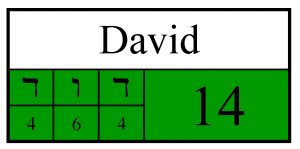 The Symbolism of 13 & 14
The Symbolism of 13 & 14
Now let’s take another look at the names as given by Matthew in Yeshua’s lineage. The first generational grouping begins with Abraham and ends with David for 14 generations. The number 14 is further emphasized by the fact that David’s name has the Hebrew letter numerical value of 14.
The 2nd generational grouping of Yeshua’s lineage also has 14 generations listed. But curiously when we get to the 3rd generational grouping there are only 13 generations. In other words, while Matthew implied that Yeshua was the 14th generation, as given he is the 13th generation or what I like to call the 13th Enumeration.
By representing Yeshua as the 13th generation, but implying the 14th, Matthew symbolized Yeshua as the atoning sacrifice / suffering servant (13) and upon His death and resurrection He became that 14th generation and the future king who will someday sit upon the throne of David. Here’s a taste of that principle from the Old & New Testaments.
The book of the generation of Jesus Christ, the son of David, the son of Abraham. (Matthew 1:1)
And, behold, thou shalt conceive in thy womb, and bring forth a son, and shalt call his name JESUS [Yeshua]. He shall be great, and shall be called the Son of the Highest: and the Lord God shall give unto him the throne of his father David: (Luke 1:31-32)
For unto us a child is born, unto us a son is given: [13th Generation] and the government shall be upon his shoulder: and his name shall be called Wonderful, Counsellor, The mighty God, The everlasting Father, The Prince of Peace. Of the increase of his government and peace there shall be no end, upon the throne of David, and upon his kingdom, to order it, and to establish it with judgment and with justice from henceforth even for ever. [14th Generation] The zeal of YHWH of hosts will perform this. (Isaiah 9:6-7)
Here take another look at Matthew’s intriguing list of Yeshua’s lineage with the above symbolism in mind:
A Biblical Reckoning of Time
As I mentioned before, to emphasize this sacrificial symbolism and further cement the connection between this sacrificial service and the Bible’s calendar, Matthew removed four names from Yeshua’s lineage in two very symbolic places.
For those not familiar with the Biblical calendar, it is important to understand the Bible’s calendar is lunar/solar. In other words, the 7 “Feasts of Yahweh” that Israel was required to celebrate were regulated by the cycles of the sun and moon, or what I like to call Yahweh’s heavenly Rolex.
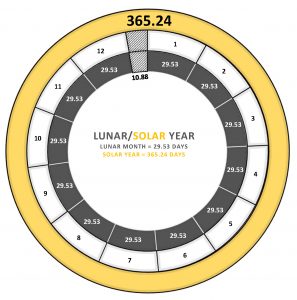 The solar cycle is 365.24 days in length and in the Bible this solar “year” is organized into 52 weeks of 6 days labor and a 7th day of rest (also 4 seasons of 13 weeks each). If all you knew about Matthew’s list was that he left out 3 of Yeshua’s ancestors between the 6th and 7th generation you might call it a coincidence. That coincidence would be called into question when you realize that he also left out one of Yeshua’s ancestors between the 13th and 14th generation. And that can hardly be an accident!
The solar cycle is 365.24 days in length and in the Bible this solar “year” is organized into 52 weeks of 6 days labor and a 7th day of rest (also 4 seasons of 13 weeks each). If all you knew about Matthew’s list was that he left out 3 of Yeshua’s ancestors between the 6th and 7th generation you might call it a coincidence. That coincidence would be called into question when you realize that he also left out one of Yeshua’s ancestors between the 13th and 14th generation. And that can hardly be an accident!
You see, on the lunar side of the Bible’s calendar you have a lunar cycle of 29.53 days. This cycle has its own internal division of 13 or 14 days of waxing light followed by 13 or 14 days of waning light every month throughout the Biblical year. Take any random month and you’ll find some combination of these numbers in the waxing and waning of the visible light of the lunar cycle.
In other words by arranging Yeshua’s lineage in this manner Matthew not only calls the readers’ attention to the sacrificial symbolism of 13 & 14, but also directs their attention towards the internal gears of the Bible’s lunar/solar calendar and their internal cycles by which those sacrificial rites are regulated throughout the year. Pretty clever would be an understatement, wouldn’t it?
Clearly Matthew 1 is not just a list of names that shows Yeshua’s lineage as a son of Abraham and David, but more importantly a symbol or metaphor if you will, that compels the Jewish reader to make a connection between Yeshua the son of David and Abraham and the promised Messiah who the Torah, Psalms, and Prophets prophesied would come as that suffering servant/atoning sacrifice as well as the future king to rule from the throne of David.
Before moving on to the chronological and Jubilee aspects of Matthew 1 consider the meanings of the names of Yeshua’s ancestors who Matthew presented in the 13th and 14th generations. Note something special happens when you include Jehoiakim, the missing king between the 13th and 14th generation of the 2nd grouping. (Jehoiakim means = Yahweh raises up)
The gift/I posses, the beloved who Yahweh heals (Yahweh raises up) and establishes His salvation – Yeshua.
Yeshua – the Salvation of Yahweh indeed!
Matthew 1 as a Chronological Template
Now let’s consider Matthew 1 and the lineage of Yeshua in the context of the Old Testament chronology with an eye towards understanding how it fits within the large chronological context of the Bible.
In Matthew 1, Matthew implies that Yeshua is the 42nd generation (14+14+14), but when the names are counted Matthew only provides 41 names (14+14+13). In other words, Yeshua is given as the 41st generation from Abraham, but then is represented as the 42nd.
Another way of looking at this peculiarity is that just as Matthew represented Yeshua as the 13th and 14th generation – the suffering servant (sacrifice) and the future king, Matthew also represents Yeshua as both the 41st and 42nd generation from Abraham. As you will see this has astounding significance.
Here is where the Masoretic text becomes relevant to this discussion. Keep in mind here that Matthew is writing to a Jewish audience. Based upon the Masoretic text of the Bible, a reasonable rendering of the chronology gives us roughly 2000 years between the birth of Abraham and the birth of Yeshua. My own understanding of the chronology gives 1988 years. This means that Yeshua was born in the 41st Jubilee cycle from Abraham.
This moves from a mere curiosity to likely intentional symbolism when you realize that based upon the MT text chronology as acknowledged by Mr. Smith, Sexton, and others – from Adam to Abraham there are 2008 years, which then in a similar manner place the birth of Abraham in the 41st jubilee cycle from Adam. In other words:
Adam to Abraham = 41 jubilee cycles
Abraham to Yeshua = 41 jubilee cycles
It becomes nearly impossible to dismiss this as an accident or coincidence when you realize that just as Matthew represented Yeshua as both the 13th and 14th generation (suffering servant and ruling king), he also synchronized the life and ministry of Yeshua with the 41st and 42nd generation from Abraham.
Based upon a reasonable rendering of the Masoretic text chronology and Matthew 1, Yeshua became flesh (the 13th generation) in the 41st jubilee from Abraham. Yeshua’s death and resurrection (the implied 14th generation) took place in the (implied) 42st jubilee from Abraham. Upon his resurrection Yeshua became that future king to rule upon the throne of David.
And the angel said unto her, Fear not, Mary: for thou hast found favour with God. And, behold, thou shalt conceive in thy womb, and bring forth a son, and shalt call his name JESUS [Yahweh’s Salvation]. He shall be great, and shall be called the Son of the Highest: and the Lord God shall give unto him the throne of his father David: Luke 1:30-32
I Jesus have sent mine angel to testify unto you these things in the churches. I am the root and the offspring of David, and the bright and morning star. Revelation 22:16
And one of the elders saith unto me, Weep not: behold, the Lion of the tribe of Juda, the Root of David, hath prevailed to open the book, and to loose the seven seals thereof. 6 And I beheld, and, lo, in the midst of the throne and of the four beasts, and in the midst of the elders, stood a Lamb as it had been slain, having seven horns and seven eyes, which are the seven Spirits of God sent forth into all the earth….
And every creature which is in heaven, and on the earth, and under the earth, and such as are in the sea, and all that are in them, heard I saying, Blessing, and honour, and glory, and power, be unto him that sitteth upon the throne, and unto the Lamb for ever and ever. Revelation 5:5-13
Corruption Conundrum
In my opinion the above evidence makes for a compelling case in support of the Masoretic text, at least as far as the chronology from Abraham to Yeshua is concerned. It’s really hard for me to wrap my mind around the idea that the Masoretes would have forged the chronology of the Old Testament from Adam to Abraham, but left the chronology from Abraham to Yeshua unmolested, especially in light of Matthew’s arrangement of Yeshua’s lineage.
Keep in mind here that the Sexton and Smiths Rabbinic forgery’s hypothesis postulates that this corruption of the Biblical text was perpetrated sometime after Yeshua’s death and resurrection to hide His identity as the Messiah. If that was in fact the ancient Rabbinic authorities intention, they clearly failed in their efforts.
Even if we argued that the MT text was changed sometime before Christ, why would Matthew have used this corrupted MT chronology as a template to show that Yeshua was the promised Messiah as well as show that He was a synchronized generational descendant of Adam and Abraham?
The Jubilee Generations
But that’s not the only astounding aspect of Matthew’s lineage of Yeshua. If you take those 41 generations given by Matthew and you count each of those generations as one jubilee cycle. There are only four men in those 41 generations for whom the Bible provides enough chronological information to show they actually lived in the Jubilee which represented them.
They are as follows:
- Abraham
- Isaac
- Zerubbabel
- Yeshua
Take a look at the following chart. It shows each of the people mentioned above relative to their place in the jubilee cycles from Abraham. In the next section I’ll explain why these men were all pivotal in Yahweh’s redemptive plan for mankind.
The Promised Seed
As regular readers of this blog know, I see the Bible as a testimony of Yeshua, that is, a story of Yahweh’s Salvation (Yeshua means Yahweh’s Salvation). It’s the story of mankind’s sin and our separation from Yahweh because of that sin. Of a loving Creator who loved us enough to become human flesh and stand in our place when the righteous penalty for that sin was carried out. From Genesis to Revelation the Bible tells of Yahweh’s redemptive plan of the promised “seed” which brought His Yeshua (Salvation).
For whatever reason, Yahweh in His divine wisdom chose to use the numbers 13 & 14 as symbolic markers in the Bible to identify His redemptive plan as it works its way through Biblical history. Let me give you a brief sketch of that plan highlighting some of the pivotal events of that plan relative to the Masoretic text’s chronology of the Old Testament.
The Promised Seed in Genesis
After Adam and Eve sinned because of the serpent’s (Satan’s) deception, Yahweh promised mankind that someday Adam and Eve’s “seed” would bruise the serpents “head”. That redemptive plan was called into question when Cain slew Abel.
Then according to the Masoretic (MT) text of the Bible, in the 130 year of Adam a new “seed” was given through whom the Messiah would someday come.
And Adam knew his wife again; and she bare a son, and called his name Seth: For God, said she, hath appointed me another seed instead of Abel, whom Cain slew. (Genesis 4:25)
His Death Brought Rest
Centuries later, again according to the MT text, in the 182nd (13×14) year of a man named Lamech, a son was born who would keep the promise lineage of the “seed” alive through the midst of a terrible judgment Yahweh sent upon this earth. That man was Noah and during his lifetime a great flood nearly destroyed all mankind, only Noah and seven other members of his family were preserved.
It’s worth commenting here a bit more about Lamech and his father Methuselah and the fascinating meaning of their names. A case can be made that Methuselah’s name means “When He is Dead it Shall Be Sent”. According to the MT text of the Scripture that is in fact what happened because the flood came the year Methuselah died. Lamech’s (Methuselah’s son) name means powerful, lowering, humiliation or sorrow. Noah’s (Lamech’s son) name means Rest.
So if we look at these names (Methuselah, Lamech, Noah) as a prophetic story we have the following:
“When he is dead it shall be sent, a powerful, lowering, humiliation or sorrow.” Fascinating isn’t it that in the 182nd year (13×14) of Lamech’s life his “humiliation a sorrow” brought forth Noah or “rest”.
Isn’t that the story of Yeshua? His death, humiliation and sorrow was the means by which all of us are granted “rest”. In fact isn’t that what Peter told his Jewish readers in 1 Peter 3?
For Christ also hath once suffered for sins, the just for the unjust, that he might bring us to God, being put to death in the flesh, but quickened by the Spirit: By which also he went and preached unto the spirits in prison; Which sometime were disobedient, when once the longsuffering of God waited in the days of Noah, while the ark was a preparing, wherein few, that is, eight souls were saved by water. 1 Peter 3:18-21
An Oath of Sevens
Several centuries more pass and then according to the MT text (& Acts 7:4), in the 130th year of Terah his son Abram (Later Abraham) was born. This man whose faith changed the course of history and who has the honor of being the first man in the Bible with whom Yahweh personally swore (shaba) an oath of seven. This oath of seven, in part, promised that through Abraham’s “seed” all nations of the earth would be blessed.
And said, By myself have I sworn [shaba], saith YHWH, for because thou hast done this thing, and hast not withheld thy son, thine only son: That in blessing I will bless thee, and in multiplying I will multiply thy seed as the stars of the heaven, and as the sand which is upon the sea shore; and thy seed shall possess the gate of his enemies;
And in thy seed shall all the nations of the earth be blessed; because thou hast obeyed my voice. (Genesis 22:16-18)
That shaba, that oath of seven, was at its core a promise of the coming “seed”. As I’ve explained in multiple articles and my book Daniel’s 70 Weeks: The Keystone of Bible Prophecy this oath of seven was called to remembrance by Moses, Daniel, Paul, Mary, Zachariah (father of John), and Peter when they spoke about the Messiah. For more on this see my article: Seven, 70, & Sevens: Daniel 9 & the Bible’s Messianic Symbolism
This brings us back full circle to Matthew 1 and the lineage of Yeshua. Matthew began Yeshua’s lineage with Abraham. A man who according to the MT text, was born during the 41st jubilee cycle from Adam. This man Abraham who also lived through the 42nd jubilee (6×7) and whose son Isaac was born exactly on the 43rd Jubilee from Adam. (More on the jubilee significance of Isaac later. And for you mathematicians out there, interestingly, the number 41 is the 13th sequential prime number.)
In Matthew’s lineage of Yeshua both Abraham and Isaac are represented by the Jubilee during which they lived. It goes without saying that both men were pivotal in Yahweh’s redemptive plan for mankind. It’s not until the 2nd temple era and the days of Zerubbabel that Matthew’s lineage of Yeshua once again aligns with the jubilee cycles and this is significant for several reasons.
Zerubbabel has the distinction of being, not only the ancestor of Yeshua but also a prophetic messianic type. The following verses demonstrate this wonderful messianic typology:
Who art thou, O great mountain? before Zerubbabel thou shalt become a plain: and he shall bring forth the headstone thereof with shoutings, crying, Grace, grace unto it. Moreover the word of YHWH came unto me, saying, The hands of Zerubbabel have laid the foundation of this house; his hands shall also finish it; and thou shalt know that YHWH of hosts hath sent me unto you. For who hath despised the day of small things? for they shall rejoice, and shall see the plummet in the hand of Zerubbabel with those seven; they are the eyes of YHWH, which run to and fro through the whole earth. (Zechariah 4:7-10)
And are built upon the foundation of the apostles and prophets, Jesus Christ himself being the chief corner stone; [headstone] In whom all the building fitly framed together groweth unto an holy temple in the Lord: In whom ye also are builded together for an habitation of God through the Spirit. (Ephesians 2:20-22)
And one of the elders saith unto me, Weep not: behold, the Lion of the tribe of Juda, the Root of David, hath prevailed to open the book, and to loose the seven seals thereof. 6 And I beheld, and, lo, in the midst of the throne and of the four beasts, and in the midst of the elders, stood a Lamb as it had been slain, having seven horns and seven eyes, which are the seven Spirits of God sent forth into all the earth. (Revelation 5:5-6)
Now do you see why Zerubbabel is given special significance in the lineage of Yeshua? But that’s only the typological significance of Zerubbabel. In Matthew’s lineage of Yeshua, Zerubbabel also has chronological significance.
You see it was during his lifetime that the divine “commandment (Hebrew dabar = word) to restore and build Jerusalem” was given. That divine word was given by Yahweh through the two prophets Haggai and Zechariah and witnessed by Ezra 6:14-15:
And the elders of the Jews builded, and they prospered through the prophesying of Haggai the prophet and Zechariah the son of Iddo. And they builded, and finished it, according to the commandment of the God of Israel, and according to the commandment of Cyrus, and Darius, and Artaxerxes king of Persia. {commandment: Chaldee, decree} 15 And this house was finished on the third day of the month Adar, which was in the sixth year of the reign of Darius the king. (Ezra 6:14-15)
As I’ve demonstrated in my book and multiple articles, this divine word to restore and build began the famous countdown to the Messiah described in the 70 Weeks of Daniel 9, the Bible’s most important and specific prophecy concerning the coming of the Messiah.
For more on this subject please see my free articles or books:
The Fifth Command
70, Sevens, and 70: Daniel 9 and the Bible’s Messianic Symbolism
Daniel’s 70 Weeks: The Keystone of Bible Prophecy
70 Weeks and 13 Jubilees
I would be remiss here if I did not point out that according to Matthew 1 there are 13 Jubilee cycles from this divine command to restore and build Jerusalem until the coming of the Messiah Yeshua when the lineage of Yeshua and the Jubilee cycles once more are synchronize. In other words one might say that the 70 Weeks of Daniel 9 and the 13 jubilee cycles between Zerubbabel and Yeshua are chronological related.
The following chart summarizes the chronology we’ve explored above, but I’ve added an additional layer of information to the chart. That additional layer of information shows Matthew’s lineage of Yeshua relative to the Masoretic text’s version of Old Testament chronology and the jubilee cycles which have been synchronized with the creation of Adam. In my next article I’ll explain in more detail why I believe this chronology is relevant to the Rabbinic forgery’s hypothesis, but more importantly why this information shows the hand of Yahweh working through the Biblical ages to accomplish his redemptive plan for mankind.
I hope you’ll continue this adventure with me, the best is yet to come.
Maranatha!
Authors Note:
This article is Part II in my exploration of Rabbinic forgery hypothesis. The following links will take you to the previous articles in this series.
Part I: The Septuagint, the Masoretic Text, & Matthew 1
Part II: Matthew 1, the Masoretic Text, & the Bible’s Messianic Symbolism
Part III: The Masoretic Text, Matthew 1, & the Jubilee
Part IV: Sir Isaac Newton, Daniel 9, & the Rabbinic Forgeries Hypothesis

